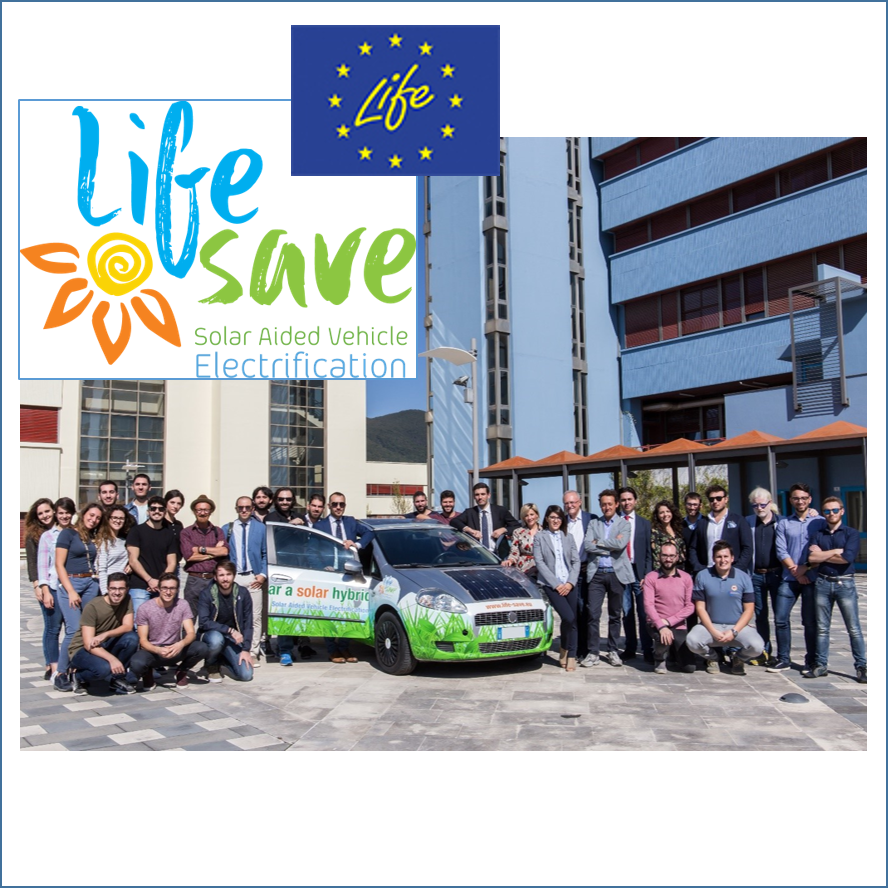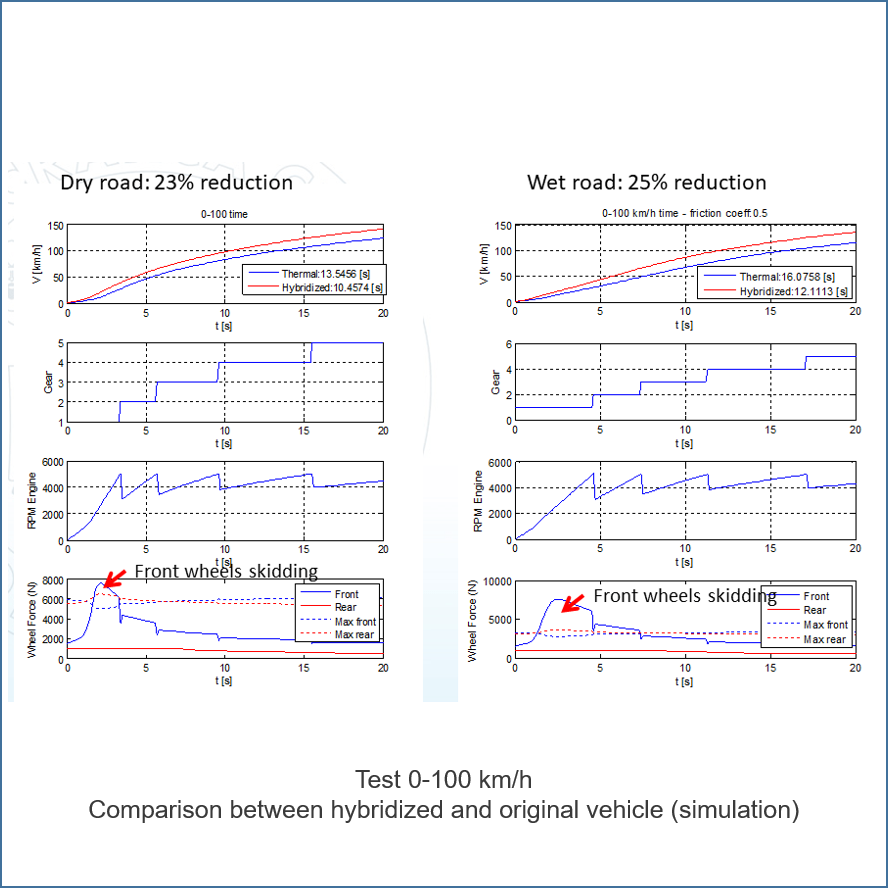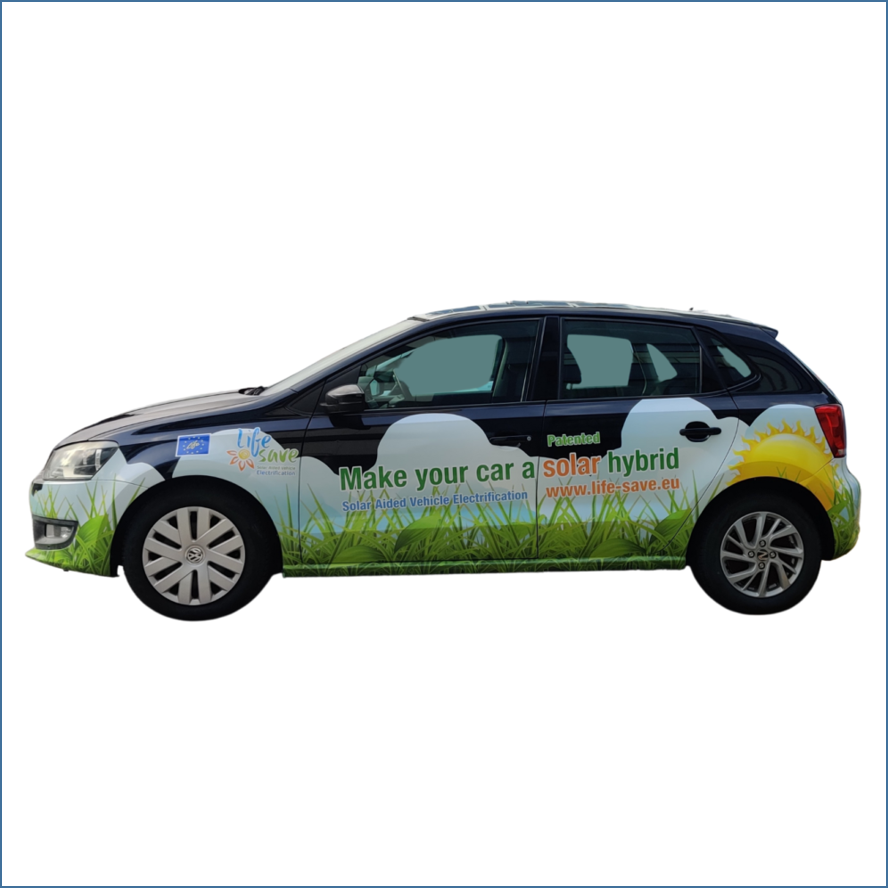SunMotive
|
Make your car a solar hybrid! |
|

SunMotive is an innovative startup born with the aim of bringing to the market a revolutionary solution for sustainable mobility: the ecological conversion of cars with internal combustion engines into hybrid solar vehicles. SunMotive's solution allows cars to be converted into hybrid-solar vehicles at a low cost, allowing to reduce consumption and emissions, to access restricted traffic areas, to increase vehicle range and performance, and to avoid car scrapping often still in good condition: REUSE is in fact one of the pillars of sustainability.

SunMotive was born as a result of the project LIFE-SAVE (Solar Aided Vehicle Electrification, LIFE16 ENV/IT/000442), funded by the European programme LIFE. A specific and strategic objective of the LIFE-SAVE project is the creation of a new corporate entity, able to favor and catalyze the industrialization of the project, being able to confer the operational, economic and financial solidity necessary to be able attract and manage public and private funding, guaranteeing the necessary contributions in terms of co-financing.

Road transport is responsible for large part of oil consumption and CO2 emissions, which put climate stability at risk. But a mass transition to electric cars is not feasible in the short term, because: it requires a very significant growth in electricity production from renewable sources; recharge times are still quite high and the diffusion of recharge points insufficient; the current electricity grid would go into crisis. Moreover, a mass transition to hybrid cars would impact with cost issues and with the need to scrap a large part of the vehicle fleet, often still in good condition. Ecological conversion is therefore a valid option to accelerate the transition towards more sustainable mobility, complying with the principles of circular economy.

Two electric motors are integrated into the rear wheels which transform the car into a 4×4 hybrid (conventional drive on the front wheels and electric drive on the rear wheels). The electric motors are powered by a battery mounted in the trunk, which can be recharged by solar panels, by the vehicle itself (during braking or downhill, or by absorbing the additional torque generated by the motor in order to optimize the overall efficiency), or from the network (option Plug-In). High-performance flexible solar panels are mounted on the roof and on the bonnet of the car, with the function of recharging the vehicle battery, both when driving and during parking phases, free and without CO2 emissions: the solar contribution is described in detail at this page. A control system, connected to a display, drives the electric motors on the basis of the driver's requests and the battery charge status, by connecting to the vehicle through the OBD port, without interfering with the original vehicle control unit.

The internal combustion engine works less, because part of the power required for traction is supplied by the electric motors, and this translates into lower fuel consumption and polluting emissions. The benefit can reach 20-25% for typical use in urban areas (one hour of driving per day) and on sunny days, but it is still appreciable even in the absence of sun, due to the benefits linked to hybridisation (recovery of 'energy of braking and downhill, optimization of the efficiency of the heat engine). The car, similar to a hybrid, will be able to have access to limited traffic zones (ZTL). Unlike what happens for an electric car, the car has no problems with recharging and autonomy, which in fact is even increased compared to the starting vehicle thanks to the additional battery. The car will also have better performance, thanks to the all-wheel drive. The presence of electric motors in the rear wheels improves acceleration, with a reduction of the 0-100 km time by more than 20%. A comparison of solar hybridization versus other solutions for sustainable mobility is at this page.

A first prototype of a car converted to a solar hybrid was built at the University of Salerno starting from a FIAT Punto Diesel. This first prototype, characterized by a degree of technological development (TRL) equal to approximately 5 on a scale from 1 to 9, made it possible to validate the idea, verifying the possibility of driving the car in hybrid mode. The work carried out with the LIFE-SAVE project has made it possible to develop a more advanced prototype (TRL=8/9), starting from a VW Polo Diesel, equipped with motorized wheels in AC integrated with the braking system, a more advanced control system based on CAN Bus, a less bulky and higher capacity battery (10 kWh), a digital monitoring system and double-curved flexible solar panels. From 2020, the goal of homologation in Italy and in Europe is closer, thanks to a law approved by the Italian Parliament.

The conversion of internal combustion engine cars into hybrid-solar vehicles is characterized by its marked ecological footprint, and is in line with many of the Sustainable Development Goals (SDG) of the United Nations, in the context of the 2030 Agenda for Sustainable Development. The SDGs are as a universal call to action to reduce poverty, protect the planet and ensure that all people are guaranteed to live in peace and prosperity. The 17 goals include, among other topics, climate change, economic inequalities, innovation, sustainable consumption, responsible consumption and production. A detailed analysis of the impact of the LIFE-SAVE project on the SDG sustainability indexes is at this page, while an articulate study on the substantial benefits of vehicle reconversion in terms of LCA (Life Cycle Assessment) is at this page.

Four Italian partners contributed to the LIFE-SAVE project: ATS (formerly Mecaprom), a company that operates in the domestic and international market as a leader in the development of propulsion and transmission systems; Solbian, a leading Italian company in the production of flexible and high-efficiency photovoltaic panels for automotive and marine applications; eProInn (Energy and Propulsion Innovation), where the first prototype of a vehicle converted into a solar hybrid was developed ; and Landi, world leader in the sector of alternative energy for cars. The partners are presented at this page.
